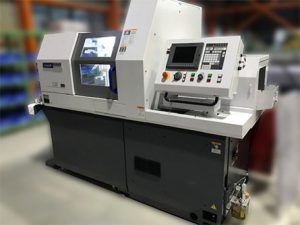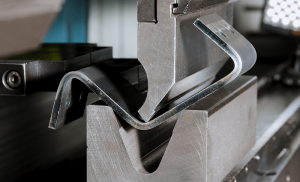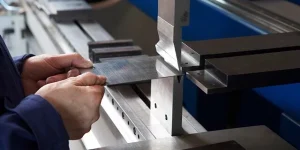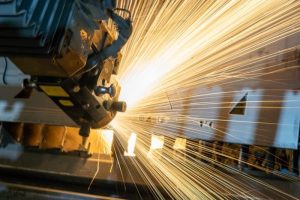When choosing CNC tools, understand material properties, consider tool geometry and coating, optimize cutting conditions, ensure stable holding systems, and evaluate cost-effectiveness
Understand Material Properties
When choosing CNC tools, the first thing to do is to thoroughly understand the properties of the materials to be worked. Different materials require different tool materials to maximize the results. Regarding tool materials, HSS tools are generally more beneficial for softer materials, such as aluminum and plastics. The hardness and heat resistance of vital HSS tools outperform other tool materials and should be more economical. Meanwhile, carbide tools are preferred for harder materials, such as stainless steel or titanium. The proper properties of carbide tools occur due to the superior hardness and heat resistance over HSS tools. For example, hardness of 75-80 HRC is common for carbide tools, while HSS tools range 62-67 HRC. The higher hardness of carbide tools allows for cutting harder materials without too fine tips rapidly wearing out. Therefore, selecting HSS tools to machine 1000 aluminum parts in these tests reduces costs while preserving wear at an appropriate value.
Heat and Stress Response
Understanding material operations involves a strong understanding of how materials respond to heat and stress. For example, aluminum has a melting point of 1220°F and is prone to deformation at higher temperatures. Therefore, using a tool that can disperse heat effectively is crucial. In contrast, stainless steel has a melting point of around 2500°F and can be cut with tools that can withstand higher temperatures with greater hardness without losing hardness.
Composite Materials
When working with composite materials, the material of choice should withstand the abrasive effects of these materials. Diamond-coated tools perform well with composites, as the cutting of composite materials is accompanied by the greatest service life of parts and surface finish. For example, in cutting carbon fiber packaging using diamond-coated tools, the surface finish is better and the carbide tools would wear out very quickly due to the abrasive action of the carbon fiber.
Consider Tool Geometry
Selecting optimal tool geometry is one of the essential steps in providing decent CNC machining. Given that there are hundreds of possible options here, one might develop a separate guide for any material, operation, or feature. However, there are still some general guidelines that help to define certain fixed values. The following factors seem to be the most crucial to consider.
Rake Angle
Positive rake angle reduces the cutting forces, which improves surface finish. It is the best option for cutting materials such as aluminum or plastics that are not particularly hard. Roughly 10 degrees might be a stable positive rake angle for cutting aluminum; sharp edges allow for smoother cuts and lower rubbing, which, in turn, prolongs tool life.
The negative rake angle can do exactly the opposite: reduce the cutting surface stress, which dramatically increases the tool’s strength. Cutting materials of high hardness, such as stainless steel or cast iron, will benefit from a 5-degree negative rake angle that increases tool stability. It allows the tool to survive rubs that stand for high cutting forces for much longer.
Clearance Angle
Clearance angle must be sufficient to ensure that the rest of the tool does not grind against the workpiece. However, increasing it might also weaken the tool’s strength by reducing the size of the cutting surface. Therefore it is always a trade-off. Using a 6-8 degrees clearance angle is acceptable in cases where strength is not the most important consideration; these general-purpose values allow the tool to rest on the minimum amount of material.
Cutting Edge Radius
Lastly, the size of the cutting edge radius decides between sharp blades and extend tools. A smaller cutting edge radius will be more flexible, sharp, and useful in finishing cuts. A 0.01-0.02 mm radius will provide excellent surface finish for aluminum finishing cuts. However, when raw materials need to be cut at high forces, it will be premature to lose the tool. In this case, a 0.1-0.2 mm radius will balance between strength required by initial cuts and sharpness that can still stimulate a relatively low force applications.
Angled Helix
Mine is the helix angle, with angled helix: higher angle – 30-45 degrees, would provide a faster surface finish and chip removal efficiencies. Lower angle – 15-30 degrees, would maintain the tool’s rigidity and minimize deflection. This seems to indicate that harder materials would have a lower angle. For example, when cutting steel, the helix angle is 20 degrees. This maintains the stability of the machine. On the other hand, when machining softer, ductile materials, the helix angle is 30 degrees. This is because the increased angle is more effective in chip removal. Thus, the angled helix can be used to determine the type of material.
Number of Flutes
The number of flutes affects the strength, amount of material removal and the surface finish of the tool. Few flutes – 2-3 increase the material removal efficiency and machine longevity. They are used with softer materials. For example, the tool for cutting aluminum is a 2 flute end mill. A lot of material is removed from the work place at a faster rate. As a result, the work places high demands on the strength of the tool. However, more flutes – 4-6 provides better finish and the tool is stronger. It is useful in harder materials, hence the example is a 4 flute end mill used for cutting steel.
Example Applications
I want to make 500 parts of aluminum and non-ferrous alloying, cutting an isosceles triangle prism. Height h=4mm. The length of the base is 10mm. The side edges of the prism are a=20mm, b=12mm. The cutting speed of the part is 1 m/s. The angle of sharpening is 130 degrees and cutting speed is 400 min-1. The thickness of the cut layer is 0.01mm. Helix angle of the end mill i=45O.; flutes 2. In each pass, the lateral cut is 3m. The rake angle is 10 degrees; clearance angle is 12 degrees. The cutting edge of the tool has a radius of 0.01 mm.
I also manufacture 200 stainless steel, density-7.95 g / cm, triangle prisms’ parts. The sharpening angle is 130 grad. four cutting edges and flutes 4. The thickness of the cut layer is 0.1mm. Two spirals, h=2 cm, flutes 4. The rake angle is 5 degrees; freedom angle is 8 degrees helix angle = i=20O. The instrument is a flat end mill.
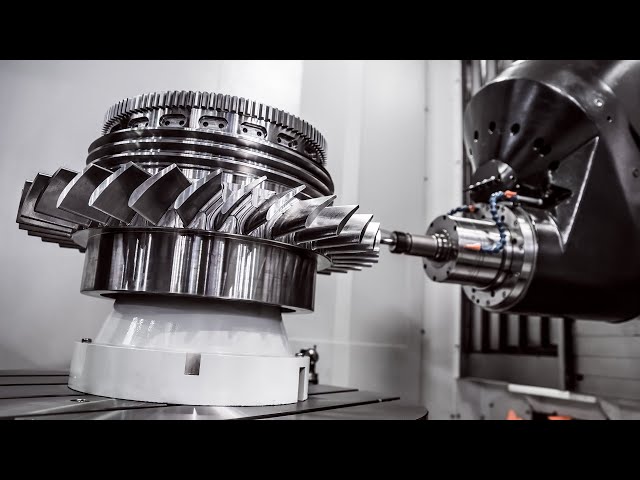
Choose the Right Coating
Choosing the proper coating for your CNC tools is relevant to enhance the tool performances, retrieve longer life period, and improve the machining outcomes. Coatings provide the effect of reduced friction, increased hardness, thermal protection, and many other benefits. Thus, it is highly important to consider the following information:
-
TiN. Titanium Nitride coatings are commonly used due to their versatility and cheapness. The material characteristics of TiN include increased hardness and reduced friction, which predetermines its use for any material. It allows the use of tools coated with TiN in at cutting speeds of 25-30% greater than with uncoated tools. For example, when applying your tools that are coated with TiN for aluminum, they will remain sharp and provide the smooth surface finish for a longer period. The hardness of TiN amounts to approximately 2300 HV. As for the temperature, the tools covered with TiN are applicable no more than 600°С.
-
TiCN. Titanium Carbonitride offers increased hardness regarding TiN, which makes it beneficial for applications to tougher materials, for instance, stainless steel and cast iron. The TiCN coating hardness allows the achievement from 3000-4000 HV. With TiCN coated tools, you can machine more complicated materials, for example, stainless steel with the tool wear up to 300% more if using no-coated tools. The maximum temperature for TiCN applications is 600°С.
-
AlTiN. Aluminum Titanium Nitride offers excellent thermal stability and resistance to the oxidation of coated tools. These coatings are undoubtedly the best for high speeds of hard materials machining, for example, titanium and nickel-based alloys. Tools coated with AlTiN can operate at temperatures no more than 800°С. For instance, it allows the application in ergonomically-built aerospace titanium machining. In other words, when using these coatings, your tools will not heat up and fade, as late as the heat is used for the increased performance and longer tool life.
Diamond Coatings
One of the hardest and most wear-resistant coatings are diamond, which is used mainly with extremely abrasive materials like composites and graphite. In these applications, the tools with diamond coatings last up to 10-20 times longer and provide excellent surface finishes when machining carbon fiber composites. They have nearly 9000 HV of hardness and higher wear resistance than any other kind of coatings.. Application Examples
Any of possible examples can be take to illustrate the importance of choosing the right coating. For example:
- Aluminum Machining: 1000 parts made of 1000 aluminum requires at using of tools, coated by TriN. This will allow to make smooth cuts for longer time, as TriN have lower friction due to higher hardness, which does not let the tool to be dulled soon in use and, therefore, to be changed on the regular basis.
- Stainless Steel Machining: 500 tools, coated by TiCN, can be used to improve wear resistance and efficiency of cutting of the same number of stainless steel component. TriCN is harder and can stand the toughness of stainless steel for the required period of time and with the same degree of efficiency in the beginning and in the end of the use.
- Titanium Machining: In aerospace, huge amounts of titanium are being machined. To make this as precise and fast as possible, it is required to use the tools, coated by AlTiN, which provides higher thermal resistance and does not allow the build-up of heat that causes premature failure of the tools.
- Composite Machining: In mass production of carbon fiber composites, the best results in the surface finishes of parts and the life and cost effectiveness of tools will be achieved with using of tools with diamond coatings and, therefore, the least degree of wear.
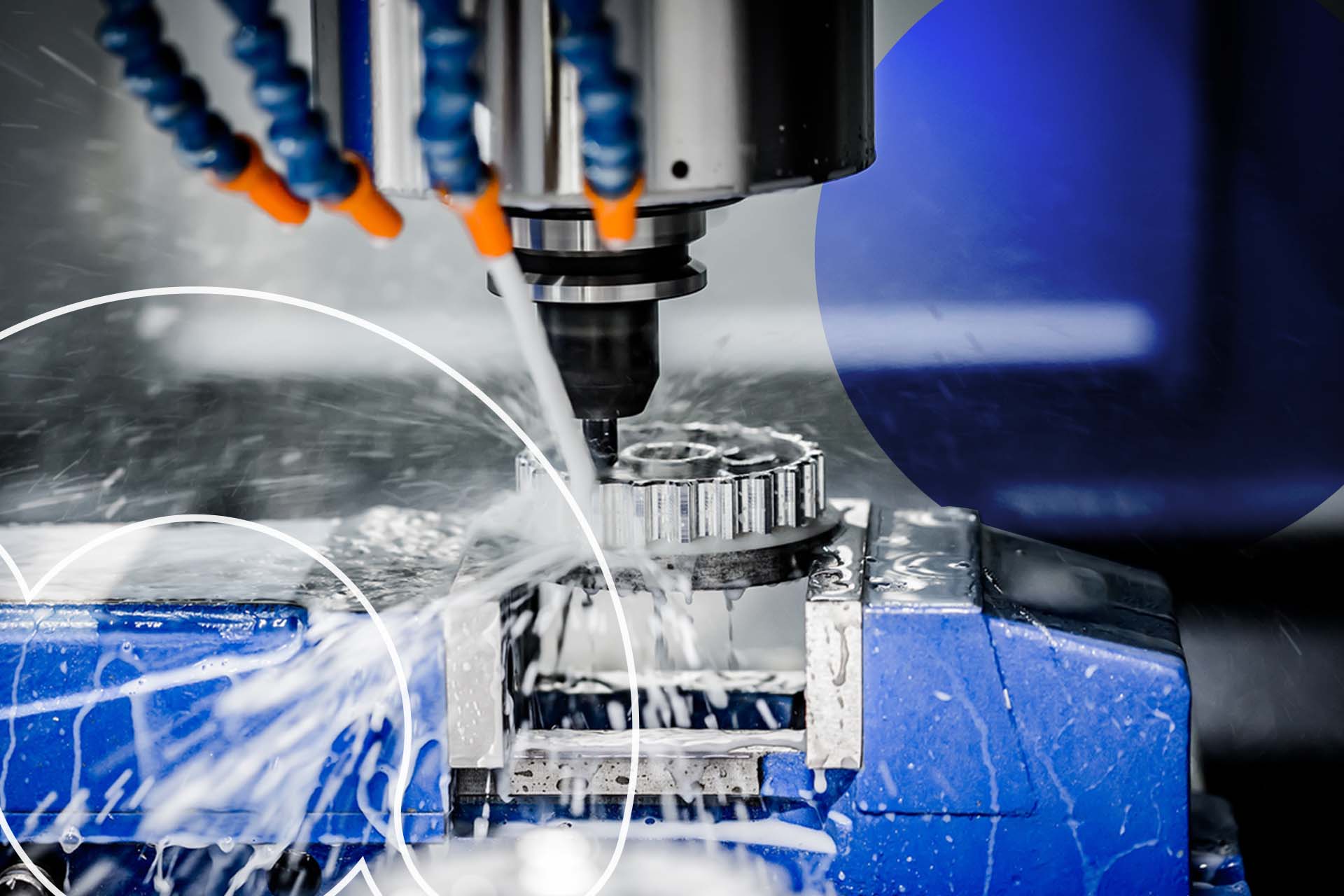
Evaluate Processing Conditions
Assessment of processing conditions is an essential step in selecting the correct CNC tools. Proper evaluation of machining parameters, such as cutting speed, feed rate, depth of cut, and cooling methods, can help optimize the performance of the tool and obtain the best quality of the workpiece. Here, a more detailed guide to assessing these conditions is provided:
Cutting speed
This parameter has a direct influence on the life of the tool and its machining efficiency. For instance, high-speed machining of aluminum can require cutting speeds of 1500-3000 SFM. In its turn, a harder material such as stainless steel typically necessitates a speed at the lower end of this spectrum, 200-400 SFM. The correct speed is reached when the tool lives as long as it can and the production rate is maximized. As an example, for titanium, the speed of 200 SFM can be suitable for ensuring the integrity of carbide tools and a good surface finish.
Feed rate
This parameter, which also influences the rate of material removal and the size of cutting forces, defines how quickly the tool is being fed toward the workpiece. The higher feed rate increases material removal rates and cutting forces, as well as the generation of heat. For softer material such as aluminum, a feed rate of 0.005-0.015 inches per tooth is characteristic, while for harder materials, such as steel, 0.002-0.006 IPT is more common. As an example, in roughing out a complex part out of aluminum, it can probably be fed at 0.010 IPT to maximize efficiency. After that, when refining the surface of the part, as feed rate of 0.005 IPT will be appropriate.
Depth of cut
Deeper cuts impose a larger load on the spindle and the tool. They are suitable for removing as much material as possible when roughing. This phase can be conducted with depths of cut as high as 0.250 inches in aluminum. After that, for finishing, shallower cuts of 0.020 to 0.050 IPT out of the whole cutter can be broadly used.
Example: In the case of high-strength steel, carries a depth of cut of 0.100 inches. The roughing ensures stability and efficiency while finishing, varying from 0.010-0.020 inches under the same way sought tolerance and surface finish.
Cooling Systems
Cooling systems are very important to process the heat and prolong, as flood coolant which is very to use in CNC machining to reduce the temperature and flush the chips away. Another very to use in the case of high machining or hard materials is High-Pressure Coolant, which reaches the cutting zone, cools and goes directs the chips in the direction they can flush :
Example: While machining titanium, the machinist can apply HPC at 1000 PSI as a cooling system that will effectively cool and avoid the tool becoming hot or even being damaged by heat. In the case of aluminum, the machinist can use Minimum Quantity Lubricant coolant to reduce lubricating liquid consumption, other impact on the environment.
Process Examples
Aluminum Machining: 1000 pieces of aluminum are going to : the cutting speed is to 2500 SFM, and the Flood Coolant is applied. The feed rate should achieve 0.010 IPT in order to the product and increase efficiency by applying this way.
Stainless Steel Machining: 500 pieces of stainless steel are going to be employed and 300 SFM under the condition of 0.004 IPT and 0.080 IPT, then the transition is going to end until transition to 0.020 inches. Titanium Machining: Under the case of machining titanium parts, the machinist with should add to 0.100 inches for roughing and 0.015 inches while finished. The robust parts of aero components at 200 SFM; the feed rate of 0.003 becomes very effectively.
It is important to evaluate processing conditions to choose the right CNC tools. By indulging cuttings speed, feed rate, depth of cut, and cooling method and by optimizing these calculations, the performance of the tools can be improved and the life of the tools can be extended which results in better machining.
Check Tool Holding System
The condition of the tool holding system is a crucial part of selecting the right CNC tool. It affects machining precision, the lifespan of the instrument, and other performance measures. Here is how you can effectively evaluate and maintain your tool holding system:
Inspect Tool Holders
The tool holders should be in great condition, as it will allow the necessary stability and precision. Regularly inspect the holder for wear, damage, and contamination. Small defects can commonly lead to severe issues during machining.
Example: A BT40 tool holder wiggling more than 0.0002 inches can cause the tool lifespan to drop and the finish to deteriorate. Ensure the runout is within an acceptable range to maintain resistance to accuracy loss with a dial indicator.
Ensure An Appropriate Clamping Force
The clamping force should be appropriate for the given conditions – lack of clamping force may cause the tool to slide off, while too much of it can permanently damage the tool holder and the spindle.
Example: A hydraulic tool holder should have a clamping force of 1500-3000 N for high-speed milling operations. It should be enough for the tool not to slip off but not enough to cause the irreparable damage of either the tool holders or the CNC spindle.
Use Balanced Tool Holders
Tools should be balanced to accommodate for high speed. Imbalanced tool holders will vibrate during operation and reduce the lifespan of the machining tool, as well as the finish of the surface.
Example: Use tool holders balanced at G2.5 at 20,000 for a 15,000 RPM on-site operation to nullify the vibrations of the tool and ensure that it runs smoothly.
Evaluate Different Types Of Holders
There are various types of holders with different strengths: collet chucks, end mill holders, and shrink fit holders, among many others. Select them based on the requirements of machining.
Example: Use ER collet chucks for precision drilling as they provide a superior grip and runout than other tool holders. For heavy milling, end mill holders may be preferable, as they are more rigid and better-suited for high-torque applications.
How to Ensure Tools Work Properly
The holding system should be kept clean. Even a small chip or coolant residue can affect the clamping force and accuracy of the tools. Clean the tool holders, spindles, and collets regularly.
Example: Wipe the tool holder to be installed with a lint-free cloth before starting the machine. Use an appropriate cleaning solution where possible and re-wipe it to maintain accuracy at installation.
How to Ensure Tools Work for a Long Time
The best tool holder loses its properties over time no less than the worst. Check the tool holders regularly, and replace them if necessary.
Example: Every 1000 hours of machining, inspect the tool holder for scoring or deformation. Replace tool holders that have been worn and maintain accuracy to avoid machining faults and tool breakage.
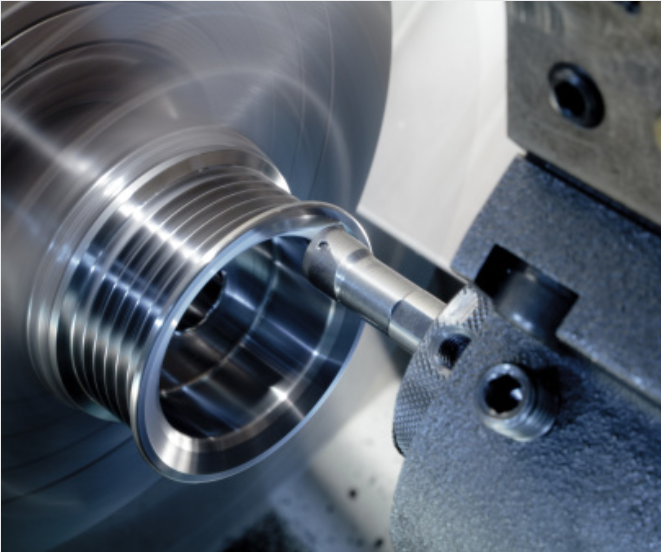
Consider Cost Effectiveness
When selecting CNC tools, one must bear in mind the ideas of cost effectiveness. That is trying to balance between budget constraints and the required efficiency of either machining. It involves analyzing the initial cost, tool life or durability, productivity or available tools or down time in the future. Here is how one can ensure cost effectiveness without compromising quality.
Initial Cost and Long-term Value
While trying to maximize profits, people wonder where to spend less or where one can even ignore significant activities. One can conclude that cheaper tools can save them cost. They might be more expensive rather than paying a lot of money acquiring durable or longer lasting tools. It is significant to purchase higher or ones for quality that guarantee longer life of tools or consistent performance. On the other hand, people have to spend much in buying or replacing cheaper tools. Furthermore, their relatively shorter life calls for so many replacements that requires relatively more cost or time.
For instance, a $50 worth of carbide end mill might look to expensively compared to $20 HSS end mills. However, if $50 worth carbide end mill delivers 20 – 40 % decrease in the overall tooling cost, it makes sense to employ it. This is because it is relatively durable needs few replacements saves time needing frequent replacements. Since it is very costly comparing some $30 or in the range of millions of dollars, it saves cost and valuable time.
Tool Life or Durability
Although some tools might be very strong, the kind of material being used by CNC machines might be harder. Such combinations leads to breakages stickiness or wearing of the tools. One example of such tools is drills being used in the metal Industry. Tool coatings, its materials or other peculiarities adds life or durability to the tool. For instance, titanium-coated drills are very expensive but can last 3-5 times longer when used on hard materials like the stainless steel.
Productivity or Efficiency
In this concept, people wonder whether spending more on acquiring or using some tools can improve productivity or the general efficiency. Higher productivity requires fairly expensive but rich-in-quality tools. It is compulsory since, tools might be stickier, slower or easier enmeshing of some tools to the material being worked on. For instance, a high performance end mill with advanced geometry can decrease cycle times by 20 – 30 %. This can translate to higher productivity or rates. It can save so much in cost of hours and hours of machining, thus saving the cost of unskilled labor. For instance, if time saving tools are worth $100 per head thus saving dozens of hours or cycles of operation time because they can be used.
Tool Maintenance and Replacement Costs – Maintenance and replacement of the tools is the most concerning cost. Regular maintenance can help in extending the tool’s life whereas, frequent replacements can add to the cost. Develop a tools maintenance schedule to avoid any sudden maintenance expenses. For example, a preventive maintenance program can help reduce up to 25% of tool replacement costs. Training the staff to perform regular tool inspections and store the cutting tools safely may prevent premature wear and damage.
Downtime and Machine Utilization – Selection machines and tools that require less frequent changes and adjustments. Unplanned downtime can be very expensive, affecting the production schedules. It also hikes the labor and overhead costs. For example, quick-change tooling systems can help in saving 50-70% of tool changeover time. For a job shop running a dozen machines, more tool flexibility leads to fewer tools per machine. That can add up to some significant cost savings.
Bulk Purchasing and Supplier Relationships – Bulk purchasing of tools can minimize tool cost by providing discounts and reduces shipping cost. Build a strong relationship with the suppliers and negotiate on the prices and supplies. For example, purchasing 25 end mills need much less staff time than purchasing one or two at a time, so a supplier is likely to give 10-15% cost reduction. A strong supplier relationship may incur no-charge shipping, expedited service and free or low cost items. It may also open the doors to the latest tooling technology.
-
For a custom job shop, where multiple materials are machined, with complex geometries to be cut the best and most cost- efficient solution would be to equip the shop with versatile, and high-quality tools, that do not have to be changed very often during the operation. The contour of with to be cut surface is often very complex so tools’ geometry also has to be versatile. Fewer occasions of changing the tools are beneficial because a shop doesn’t have to have that high inventory because every tool can be used more often and gets “worn-out” more rarely so the inquiring of new tools can be more rare.
-
In a modern world, precision machining is mostly used in aircraft and aerospace applications. This industry requires high quality of tools’ implementation and very high accuracy and repeatability. A solution of CNC milling with coated tools turned out to be surprisingly very cost-effective. It’s not because of the initial cost of the tools were low, basically, they are very costly. But it turns out that the coating of tools, designated for that very specific operation is remarkably good. It provides appropriate quality of not only the tools’ life but also it’s most important feature – final product proper tolerance. That results in very few returns for re-measuring of the hastily made products. And that certainly will pay for the cost of over-coated tools.
To sum all of the above, one has to remember that cost-effective solution is not necessarily those with a low initial cost of implementation. Some factors have to be deeply examined to make proper cost-effective decisions: durability and reusability of tools, productivity of the process, tools’ maintenance, tools minimal downtime, etc.




